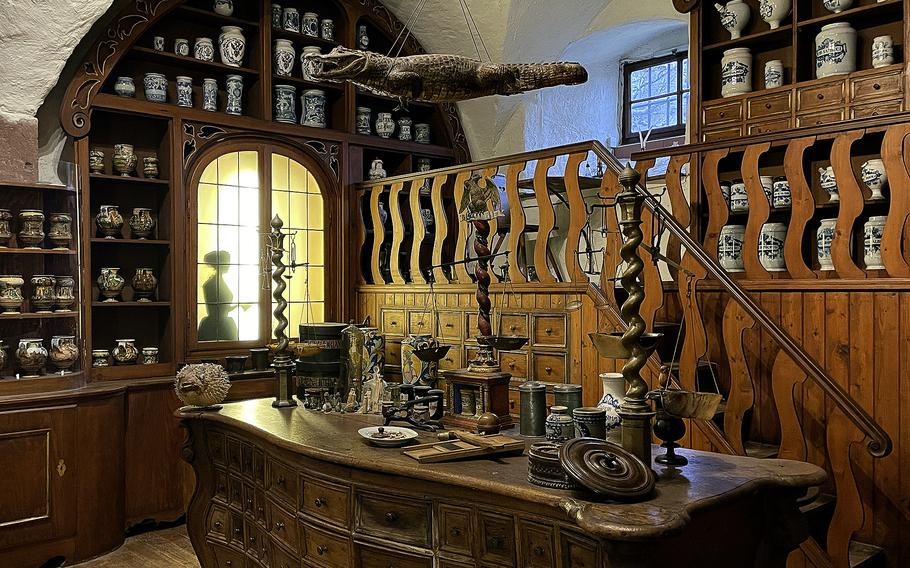
This room is a recreation of the officina for the Court Pharmacy of Bamberg in the Germany Pharmacy Museum in Heidelberg, Germany. The officina, or the Latin word for workshop, includes Baroque furnishings such as the preparation table from around 1730 to 1740. (Matt Wagner/Stars and Stripes)
Many a visitor has been caught up in the spell of Heidelberg, Germany.
The romantic views from the Philosopher’s Way across the Neckar River from the university and Heidelberg Castle highlight its charms.
Inside the castle is a place visitors generally don’t expect. It details the history of a science whose origins were believed to be magic: medicine. The aptly named Apothecary Tower in Ottheinrich’s wing houses the German Pharmacy Museum.
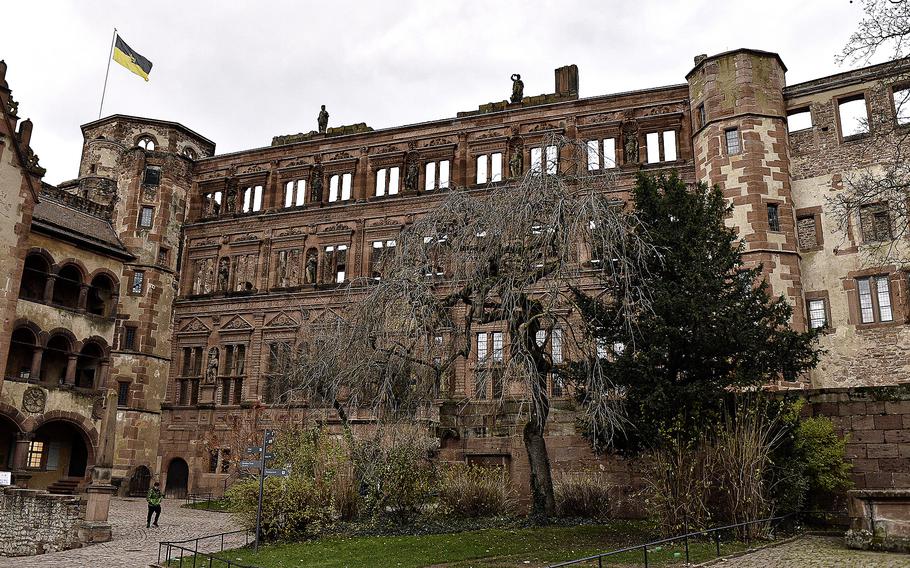
The Ottheinrich’s Wing of Heidelberg Castle from the courtyard in Heidelberg, Germany. The wing has housed the German Pharmacy Museum since 1958. (Matt Wagner/Stars and Stripes)
According to the paper guidebook I bought at the entrance, approximately 600,000 people annually visit the 11-room museum, which first opened in Munich in 1938 and has occupied its current location since 1957.
It is a warehouse full of the world’s largest stock of “materia medica,” or raw materials used in the production of medicine, from the 17th through 20th centuries.
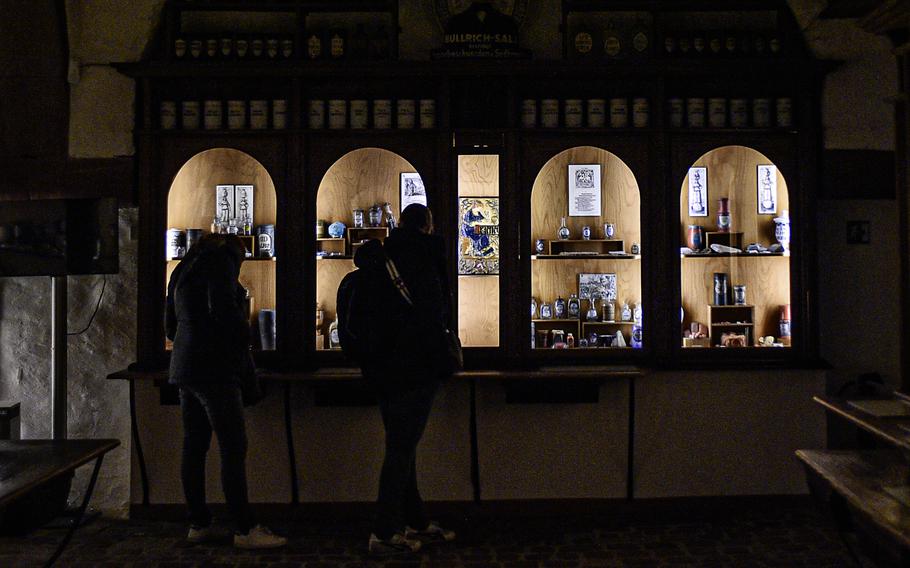
Visitors look at the display of "materia medica," or raw materials that are either medicines themselves or can be processed into them, at the German Pharmacy Museum in Heidelberg, Germany. The museum holds the world's largest stock of such materials of the 17th to 20th centuries. (Matt Wagner/Stars and Stripes)
There are 28 display cases with more than a thousand materials grouped either by active agents or indications. Included in the collection are medicinal sources still in use today, such as St. John’s wort and sage.
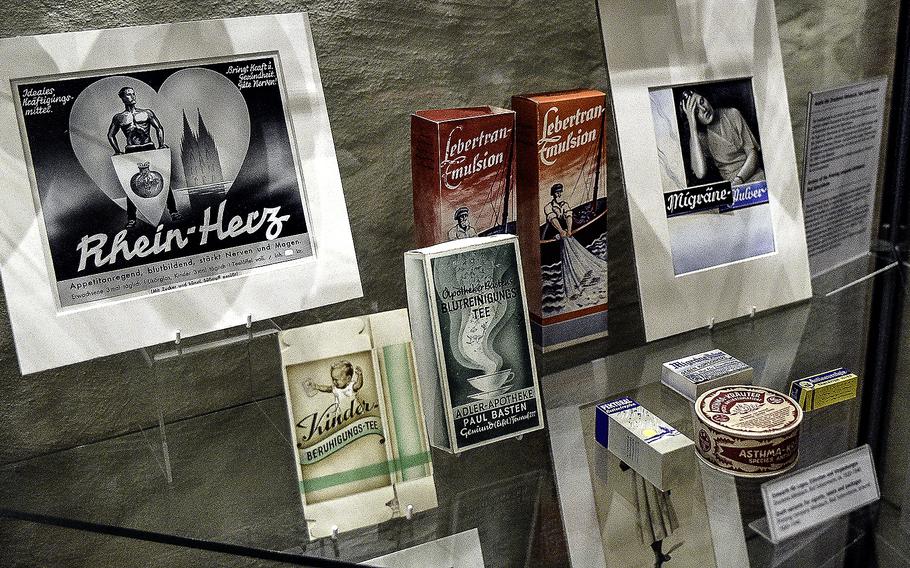
This display of the German Pharmacy Museum in Heidelberg, Germany, holds pieces of the printing company Melsbach in Bad Sobernheim, Germany. Founded in 1832, the archives joined the museum following 2006 takeover by the Wolf Group. (Matt Wagner/Stars and Stripes)
Among the remedies of a bygone era shown are “unicorn horn,” which really was the tooth of a narwhal, and a “unicorn fossil,” which actually was the tooth of a mammoth.
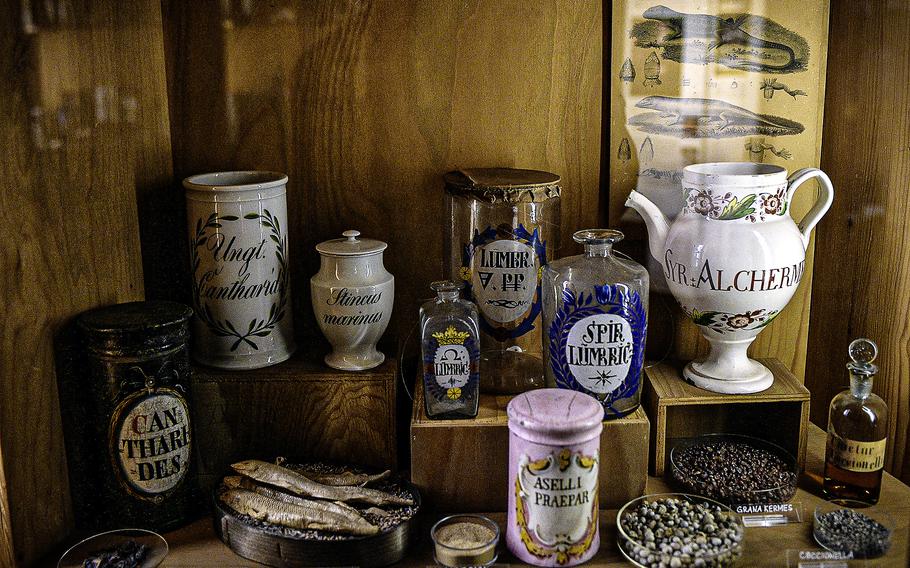
These items on display at the German Pharmacy Museum in Heidelberg, Germany, were made from animals or once held materials for use in medications. Those included animal fats, beewax, fish glue and small animals such as insects. (Matt Wagner/Stars and Stripes)
Also impressive are the re-creations of pharmacies in the German-speaking world. The attention to detail, using original cabinetry and items from the time periods, really added clarity to how pharmacies looked and worked.
In the fourth room, the display of the old Crown Pharmacy in Ulm had its walls painted blue like they were around 1820, with cherry wood furnishings that secured the materials in drawers as opposed to on shelves, as was common practice then.
The “officina,” or workshops, in the second and the sixth rooms hammered home the setting in which pharmacists worked while filling prescriptions during the 17th and 18th centuries.
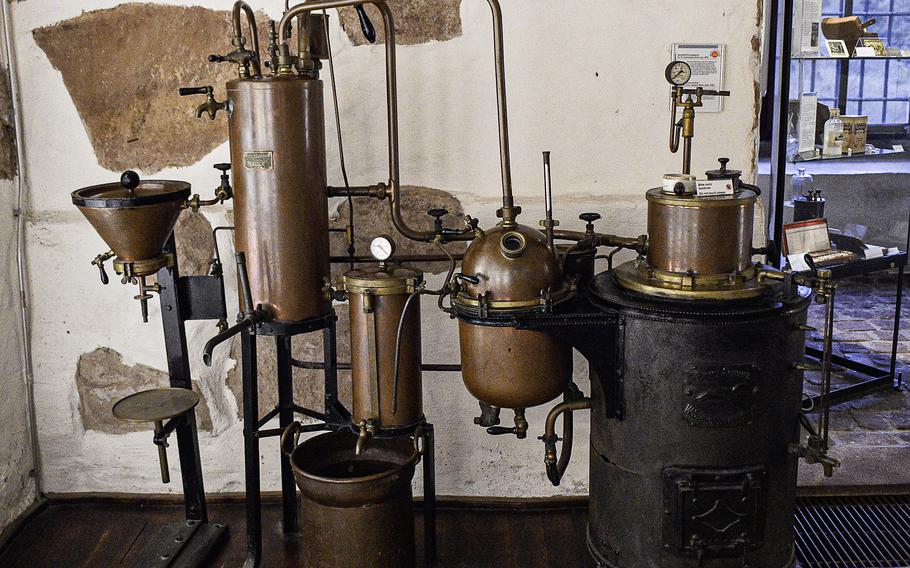
This stream distillation machine from around 1890 is found in the German Pharmacy Museum in the Heidelberg Castle in Heidelberg, Germany. It was one of the many tools introduced in the late 19th century for making pharmaceuticals. (Matt Wagner/Stars and Stripes)
The display of the Baroque court pharmacy of Bamberg from 1730 to 1740 brought out an interesting detail. Until 200 years ago, customers could talk to pharmacists only through a window, which probably added to the mystique surrounding medicine.
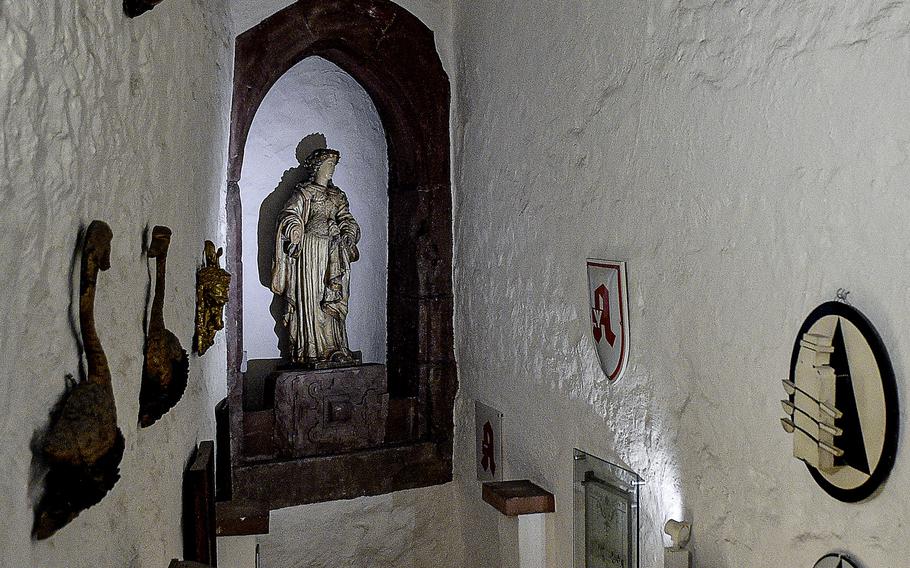
This room at the German Pharmacy Museum shows the various symbols and logos used to indicate a pharmacy and its name in Germany throughout the ages. Along with the "A" symbol seen today, creatures such as a unicorn, swans, lions, stags, griffin, elephants, eagles or the bear were used. (Matt Wagner/Stars and Stripes)
The museum presents a full picture of the advancements in medicine from antiquity to the modern age, although sometimes the amount of information was overwhelming.
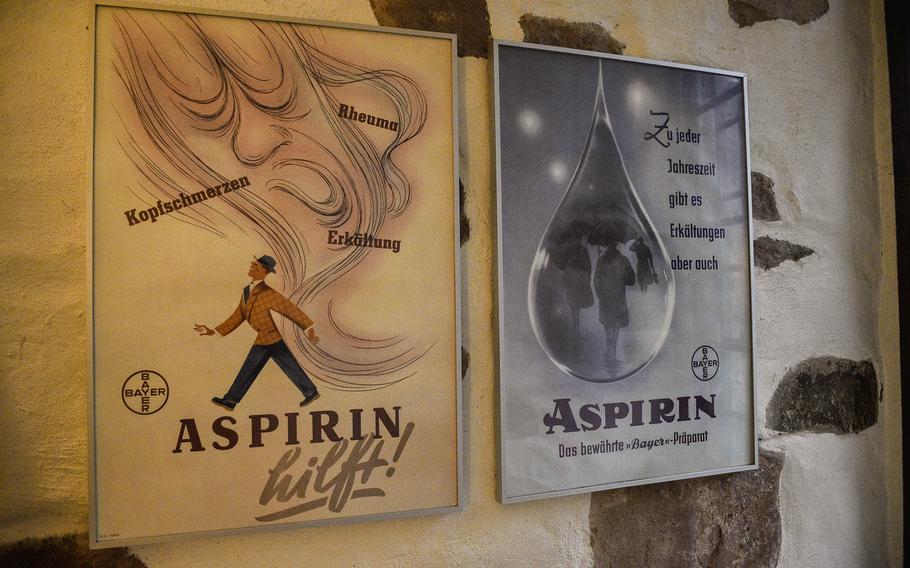
These posters hang on the wall of the German Pharmacy Museum in Heidelberg, Germany. They advertise for the Bayer company's aspirin, extolling of their benefits against headaches, colds and rheumatism. (Matt Wagner/Stars and Stripes)
The medical contributions of the Arab world during the Dark Ages in Europe receive attention, as do such historical figures as Paracelsus, who played a key role during the Renaissance by advocating for the use of chemicals and minerals in medicine.
The name piqued my interest because the SyFy show “Warehouse 13” features a fictionalized version of him as a villain, as opposed to the positive figure portrayed in the museum.
The museum isn’t just a bunch of displays, however. It has hands-on activities as well.
For example, in the third room, visitors can look at photos of herbs, smell them and then try to guess what each is via a quiz in either German or English.
And from May through October, tours of the Apothecary Garden are offered.
Perusing the German Pharmacy Museum is another way for visitors to soak up the fascination of Heidelberg Castle, a magical place in its own right.
On the QT
Address: Schlosshof 1, Heidelberg, Germany
Hours: From Nov. 1 to March 31, 10 a.m.-5:30 p.m. daily, last admission at 5:10 p.m.; from April 1 to Oct. 31, 10 a.m.-6 p.m. daily, last admission at 5:40 p.m. Special hours apply around holidays; closed Dec. 25.
Cost: Admission is covered by a ticket to Heidelberg Castle (9 euros for regular visitors, 4.50 euros for children, students up to age 28 and people with disabilities).
Information: +49 622125880 or https://deutsches-apotheken-museum.de.